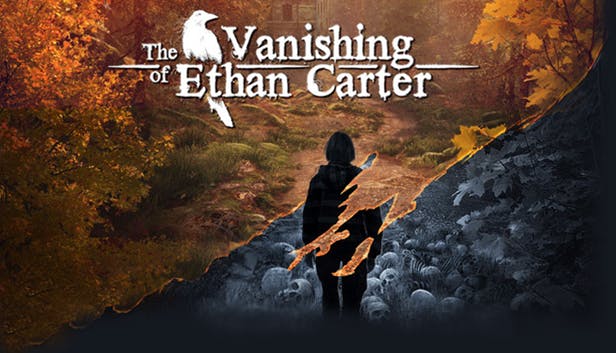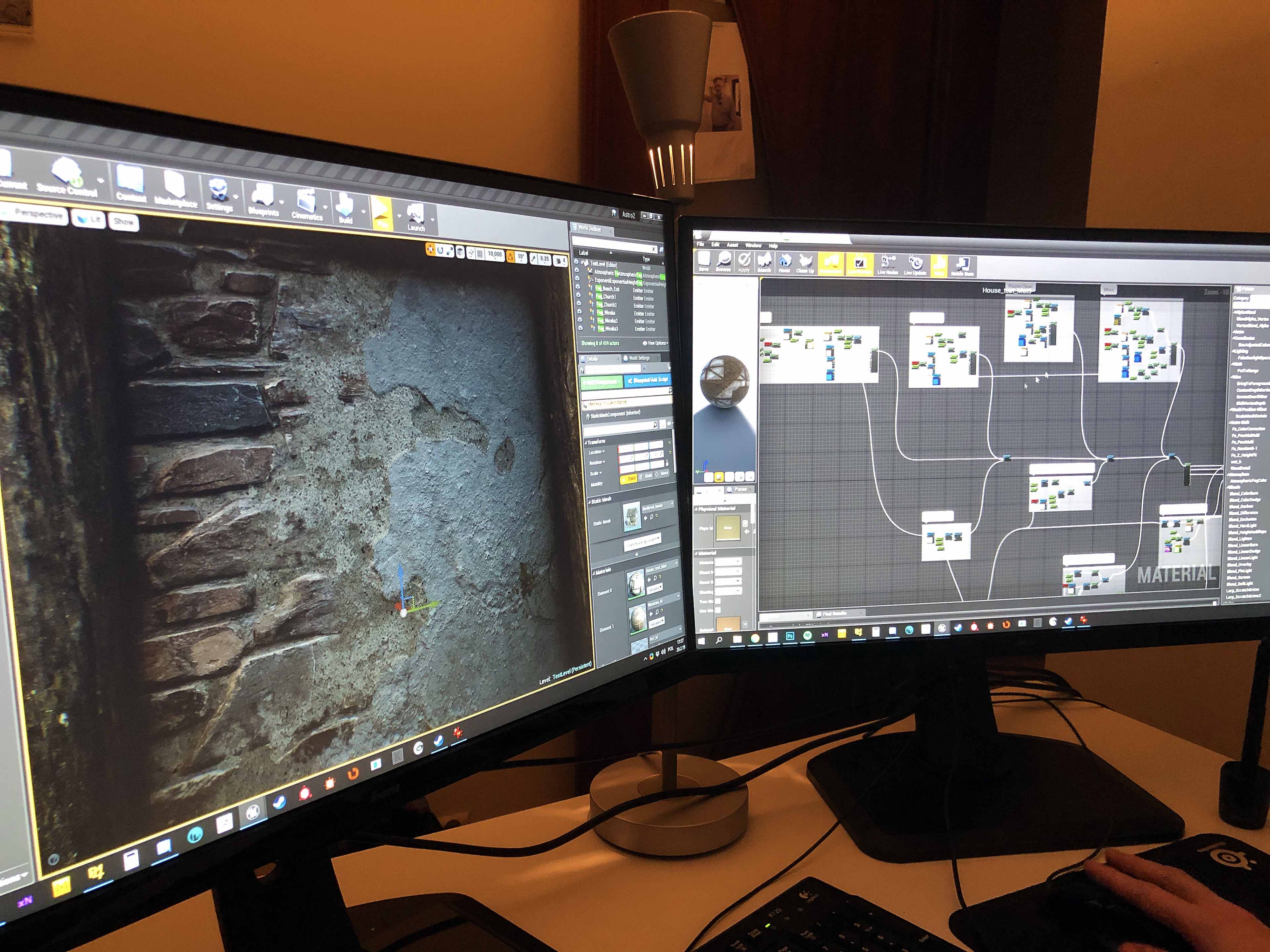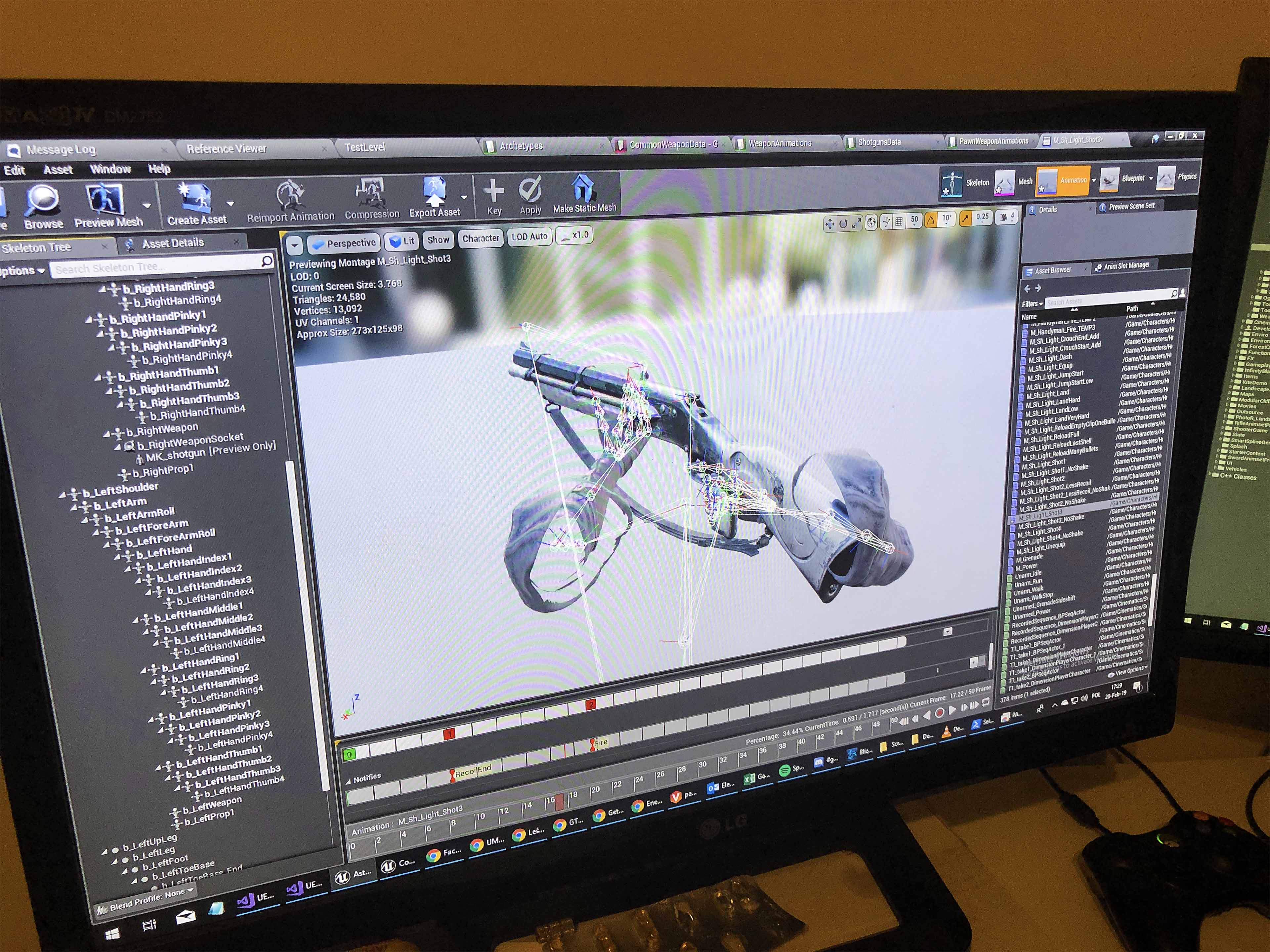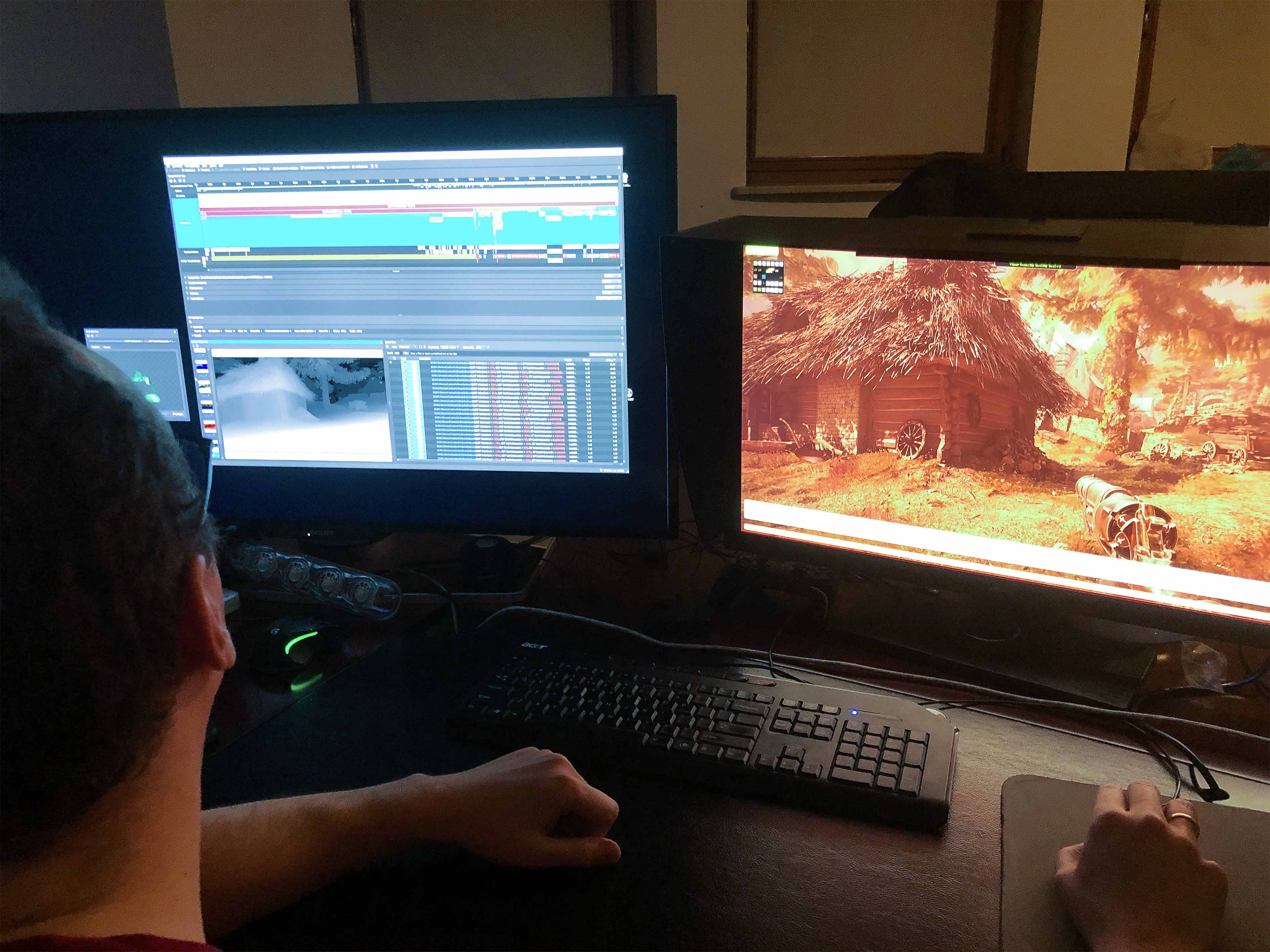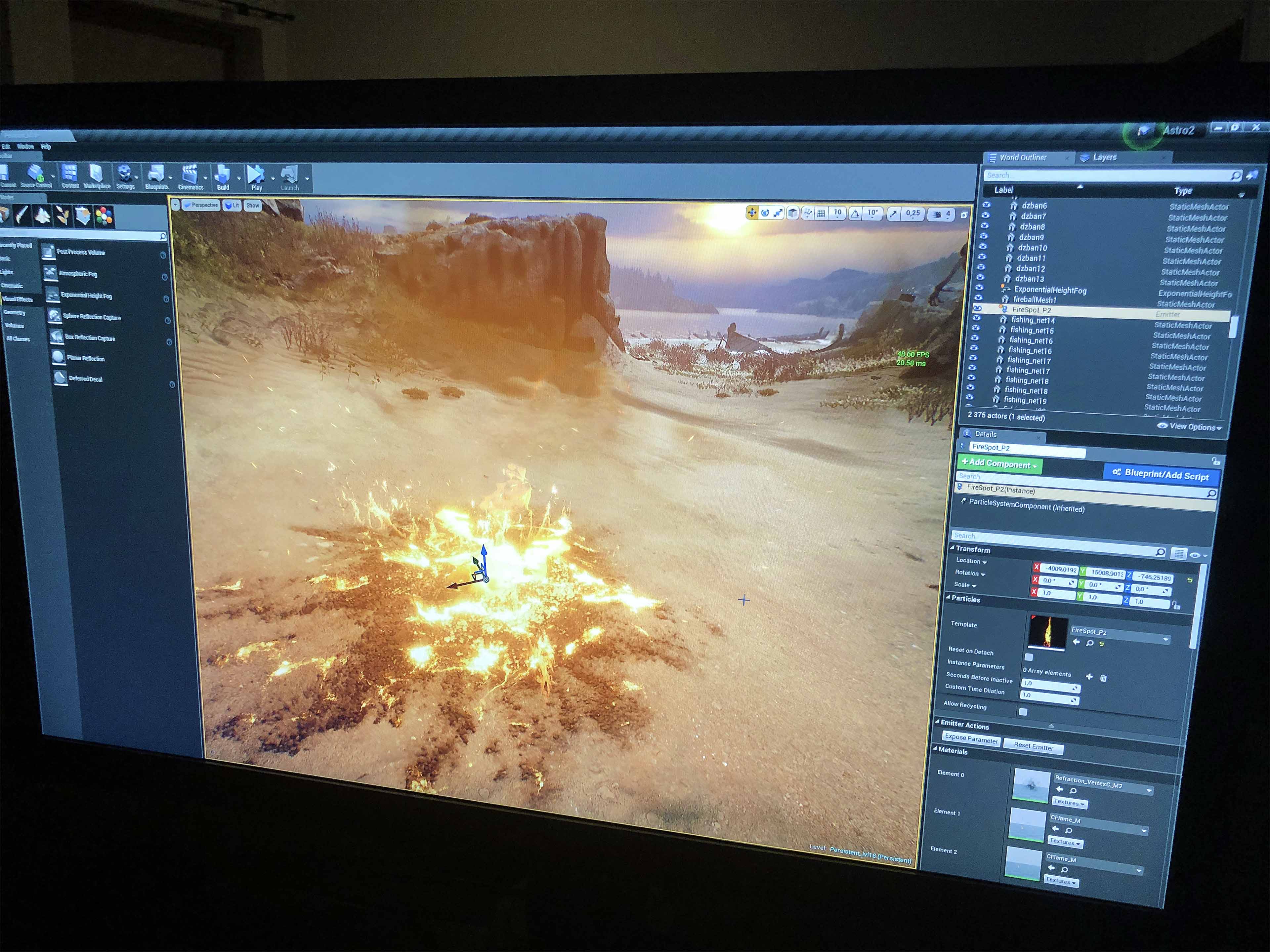We’re working on a so-called combat vertical slice, basically an encounter that shows off and proves all basic combat elements. We should be showing some of it to the public in March.
Karol is sick and out today, but what is the rest of us up to this Wednesday?
Adam started to mesh a new area, you can see its humble beginnings behind the gate he just placed.
A simple wall stopped being just a simple texture sometime in the 1990s. To the right you can see various materials and layers that when combined produce the end result you can see on Kamil’s monitor on the left. It’s not just the texture but also things like the way the wall absorbs and reflects the light.
Paweł just got a shotgun animation set from Jakub and is putting it all into the game. Right now it’s just a bunch of bones and hands cut off at the elbow, but it’ll all look sexy in the first person view when implemented.
Kacper is working on the animation blends. You can see multiple colored skeletons: the blue one is used for locomotion, the red and yellow show any additive animations like aim offsets or idle pose blends, and the green one is the final pose.
When hit, the enemy reacts, and his blue locomotion skeleton freezes. After the hit reaction ends, the animation blends back to the blue skeleton and the poor soul is ready to continue being a threat.
Graphics are important but the framerate is importanter. Andrew is our resident wizard who specializes in making things look as if they should run in 10 fps but actually run in trillions of fps. On the left there’s a profiler, a software that shows exactly what costs how much.
Michał is working on the particle effects for the combat vertical slice. This particular one is a frame from an AOD (Area-of-Denial) effect caused by the Grenadier’s weapon. AODs are actually quite hard to pull off in First Person games, as the visibility is much worse when compared to e.g. bird’s eye view games or even Third Person games – but we have some ideas how to make it work.
I could probably post a photo of our WordPress editor, as writing this post is literally my job for today, but let’s have a piece of concept art from Jakub Kuźma instead. Imaginatively titled shield.jpg, this image shows, well, a shield. One of the enemies uses it to make your life that much harder.
Question of the Week
So many things to talk about here… We’ll talk more about out philosophy as for the difficulty in one of the later posts, but to give you a glimpse, let me address the hard-hitting and bulletsponges.
As for the former, well, I don’t think that hard-hitting enemies are a fake difficulty. They can feel cheap when the damage is exaggerated (e.g. when one swing of a sword from a minor enemy kills you) but in general, high damage can add tension and weight to the combat. It’s hard to imagine a Souls game in which a boss takes only 1% of your health with each attack.
At the end of the day, it’s all “simply” about balance. But because our idea for combat is fair fight in which the player feels that any damage received is their own fault, we do want you to feel that your mistakes have a cost attached.
Bulletsponges are an ever harder nut to crack. Quite often the players call an enemy a bulletsponge before they actually spend time on coming up with strategies to melt them down quickly. I think it’s basically human nature: if it’s relatively easy not to die in a fight, most people would rather just keep unloading at the enemy rather than look for ways to speed up the fight. If it ain’t broke, don’t fix it kind of thinking.
Our idea is for bosses to feel strong, powerful and dangerous. They would feel like bulletsponges if you camp in a safe spot a hundred meters away and chip away their health. Our job, then, is to make sure that:
a) With skill, proper tools and strategies, the fight can be over quickly;
b) We have features that motivate the player to achieve the above.
